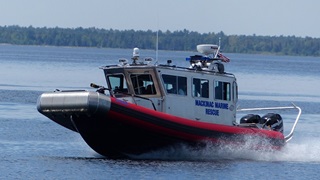Compression, circulation and a life-saving touch
Michigan EMS department gets a ‘second set of hands’ with LUCAS 2 automatic CPR system
Save your breaths for later, say the experts. When it comes to cardiopulmonary resuscitation (CPR), starting with the chest is best.
In recent years, the American Heart Association officially changed its recommended order for life-saving CPR—calling for rescuers to begin with chest compressions first, before opening the airway and providing quick breaths.
“We know that the human brain dies within four to six minutes without adequate blood flow,” says Jeff White, chief of the Richmond/Lenox EMS Ambulance Authority in southeastern Michigan. “Compressing the oxygenated blood remaining in the body—and keeping it moving to the brain as long as possible—is now considered the most important element of CPR.”
All of which makes the LUCAS 2 Chest Compression System an authentic life-saver. This automated, portable system provides life-sustaining circulation for the brain and the heart through consistent, uninterrupted, high-quality CPR.
About half a year ago, Richmond/Lenox EMS was one of the first ambulance services in its region to acquire a LUCAS 2 device, thanks to a local fundraising campaign that was boosted by a $10,000 Enbridge Safe Community donation.
The LUCAS 2 eliminates the need for a second paramedic to provide substitute compressions, while the primary rescuer concentrates on other urgent patient needs. It also continues to provide vital compressions during situations that would otherwise be impossible.
“We’ve used this device already on staircases, in elevators, and even in agricultural field settings—in situations where, previously, compressions would simply stop while you moved the patient across difficult terrain,” says White.
“And regardless of how strong, or strong-willed, a rescuer might be, providing consistent, high-quality compressions—right speed, right depth—can be difficult,” he adds. “To have a device that guarantees we get the right number of compressions, at the right depth, is paramount in survival and patient outcome.”
Enbridge is committed to enhancing quality of life in the communities near our operations. Through our Safe Community program, Enbridge actively supports the first responders who save lives and protect the safety of people and property in those communities.
Since 2002, we’ve invested more than $9.3 million in grant money to emergency response organizations across North America—including this recent $10,000 donation to Richmond/Lenox EMS, which helped pay for the LUCAS 2 device and a three-year maintenance agreement.
“In nearly every case, when we’ve delivered a patient to the hospital emergency room, the doctors who continue the resuscitation have asked us to leave the device on the patient, because it frees up hands to provide other care and treatment,” remarks White.










